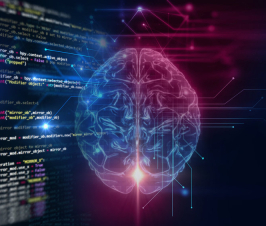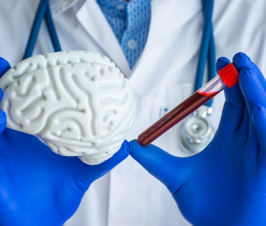A recent study looks at the experience of pain as a self-fulfilling prophecy, that expecting more pain may result in the experience of more pain.1 The reinforcement and perpetuation of pain pathways has been a dominant interest in research on chronic pain, an attempt to understand why some individuals experience pain from relatively benign stimuli, or experience pain long after an injury has healed. This research, published in the journal Nature Human Behaviour,demonstrates that expectation of pain can influence the intensity of pain/stimuli, and that these expectations can persist even after reality repeatedly contradicts previous expectations.
Positive feedback loop between expectation and pain
“We discovered that there is a positive feedback loop between expectation and pain,” said senior author Tor Wager, a professor of psychology and neuroscience at the University of Colorado Boulder. “The more pain you expect, the stronger your brain responds to the pain. The stronger your brain responds to the pain, the more you expect.”
Study launched after a researcher noticed test subjects continued to expect something would hurt badly even after repeatedly being shown stimuli to be relatively non-painful
The study was launched after a researcher, Marieke Jepma, a postdoctoral researcher in Wager’s lab at the time, noticed test subjects continued to expect something would hurt badly even after repeatedly being shown stimuli to be relatively non-painful. “We wanted to get a better understanding of why pain expectations are so resistant to change,” said Jepma, lead author and now a researcher at the University of Amsterdam.
The first study to specifically model the feedback dynamics between expectations and pain
This is the first study to specifically model the feedback dynamics between expectations and pain, and the neuro-mechanics involved. Functional magnetic resonance imaging (fMRI) was used to measure blood flow in certain brain regions during the research study.
Study included 34 individuals
The study included 34 individuals. They were trained to associate one symbol with low heat and another with high, painful heat. The participants were then put in an fMRI machine, and for 60 minutes were shown various symbols meant to act as low or high pain cues – the symbols they had been trained with, but also the words Low or High, and the letters L and W. They were then asked to rate how much pain they expected to feel. Varying degrees of painful – but non-damaging – heat was applied to their extremities. The hottest stimuli was about the same as holding a hot cup of tea. Then they rated their experience of pain.
Unknown to the participants, the heat intensity had nothing at all to do with the cue preceding it
The study saw that participants who expected more heat displayed brain regions associated with fear and threat became more activated. Likewise, areas of the brain associated with pain generation were also more active when the stimuli was received. Individuals rated pain connected with high-pain cues as more painful regardless of how much heat was delivered.
“This suggests that expectations had a rather deep effect, influencing how the brain processes pain,” said Jepma.
Expectations had a strong influence on the ability to learn from experience
More interestingly, the expectations had a strong influence on the ability to learn from experience. Many participants showed a “confirmation bias,” or a tendency to reinforce only the experiences that they expected, and discount the experiences that contradicted their expectations. For example, if they expected a high pain stimuli and actually received it, they would expect even more the following time, however if they didn’t get high pain stimuli after expecting it, nothing changed. “You would assume that if you expected high pain and got very little you would know better the next time. But interestingly, they failed to learn,” said Wager.
“Our results suggest that negative expectations about pain or treatment outcomes may in some situations interfere with optimal recovery, both by enhancing perceived pain and by preventing people from noticing that they are getting better,” Jempa said. “Positive expectations, on the other hand, could have the opposite effects.”
Research may help reframe experiences associated with pain
This research may help reframe experiences, or possible experiences associated with pain for individuals, helping them recover from chronic pain conditions.
“Just realizing that things may not be as bad as you think may help you to revise your expectation and, in doing so, alter your experience,” said Jepma.
 Razi Berry is the founder and publisher of the journal Naturopathic Doctor News & Review that has been in print since 2005 and the premier consumer-faced website of naturopathic medicine, NaturalPath. She is the host of The Natural Cancer Prevention Summit and The Heart Revolution-Heal, Empower and Follow Your Heart, and the popular 10 week Sugar Free Summer program. From a near death experience as a young girl that healed her failing heart, to later overcoming infertility and Chronic Fatigue Syndrome and Fibromyalgia through naturopathic medicine, Razi has lived the mind/body healing paradigm. Her projects uniquely capture the tradition and philosophy of naturopathy: The healing power of nature, the vital life force in every living thing and the undeniable role that science and mind/body medicine have in creating health and overcoming dis-ease. Follow Razi on Facebook at Razi Berry and join us at Love is Medicine to explore the convergence of love and health.
Razi Berry is the founder and publisher of the journal Naturopathic Doctor News & Review that has been in print since 2005 and the premier consumer-faced website of naturopathic medicine, NaturalPath. She is the host of The Natural Cancer Prevention Summit and The Heart Revolution-Heal, Empower and Follow Your Heart, and the popular 10 week Sugar Free Summer program. From a near death experience as a young girl that healed her failing heart, to later overcoming infertility and Chronic Fatigue Syndrome and Fibromyalgia through naturopathic medicine, Razi has lived the mind/body healing paradigm. Her projects uniquely capture the tradition and philosophy of naturopathy: The healing power of nature, the vital life force in every living thing and the undeniable role that science and mind/body medicine have in creating health and overcoming dis-ease. Follow Razi on Facebook at Razi Berry and join us at Love is Medicine to explore the convergence of love and health.

















